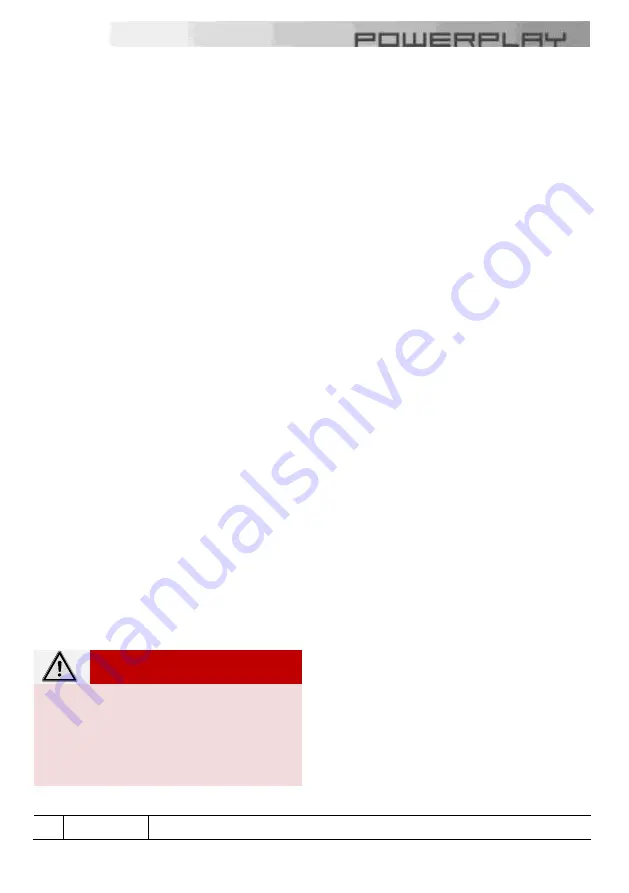
26
Section 4
Setting Up the Sting 2 and Test-Flying
lower hang point with back motors
generally allow an easier launch
Reverse launch
The Sting 2 is suitable for reverse- launching
from wind speeds of 3m/s. The pilot turns
around to face the glider with the updraft
coming from behind. This method of launch
makes it easier for the pilot to control the
rising of the canopy and to carry out fine-
tuning, so is therefore recommended in
strong winds.
If you wish, you can first clip in to the glider
as in a forwards launch and then turn around
while the motor is switched off. Guide the
lines over the cage and check that none of
the lines is caught up.
In very strong winds, we recommend that
you attach yourself to the glider when facing
backwards. The risers must be set out and
attached in such a way that you are in the
correct position after you turn around and
are not twisted.
By pulling on the front A-lines, the canopy
begins to rise above the pilot as in a
forwards launch. When the canopy reaches
its apex, the pilot must turn around into the
direction of flight and can run into the wind
and take off. As with a forwards launch, the
correct combination of brake and throttle is
important to achieve the best speed and
climb.
WARNING
The pilot must work actively to keep the
glider on the ground in higher wind
speeds (from approx. 6 m/s), otherwise
the glider may rise above the pilot
unintentionally which can lead to the pilot
being lifted off, turned and dragged away.
With the reverse launch, you should observe
the following special features in addition to
“ ”:
the correct technique for clipping in,
inflation, and turning around is very
important for the reverse launch. The
pilot must master these before points
before attempting them with the motor
running
always turn around steadily and briskly
into the right direction
when clipping in with risers crossed,
always check that they are not swapped
over or twisted in the carabiners
Climbing
Once you are airborne, you may notice the
counter-torque i.e. the glider wants to turn
against the direction in which the propeller is
turning. Focus on a fixed point in the
distance and maintain your direction by
counter-steering.
After launch, first fly into the wind and let the
Sting 2 pick up speed.
Do not climb with too great an angle of
attack. Select the rev speed and brake line
use so that there is enough speed to keep
sufficient reserve before stall point.
If the angle of attack is too high when you
are climbing, the glider could stall if there is
any further increase in the angle of attack
e.g. a vertical gust. A further reason for
keeping the climb gentle is if there were
motor failure at low altitude. If this happened,
you should always be in a position where
you are able to land safely.
Summary of Contents for Powerplay Sting 2
Page 1: ...Version 1 0 Date 08 08 2014 Instruction Manual EN ...
Page 55: ...Notes ...
















































